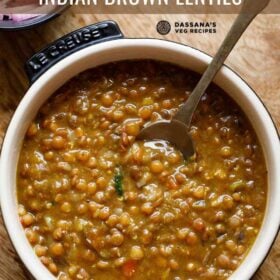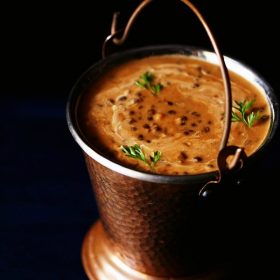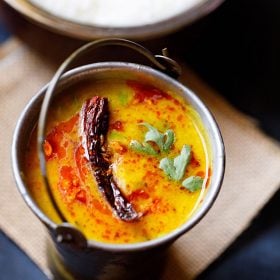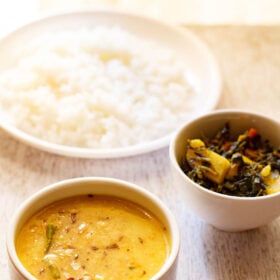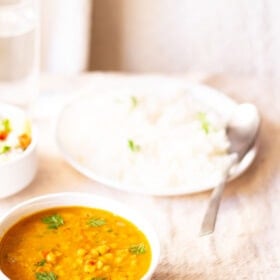The number and variety of lentils or dals that are cultivated or available in India is quite striking. I mean I can’t even imagine an Indian household without a portion of curried lentils in their daily meals. Dals do complete an Indian meal, and also make it wholesome and well-balanced. One of my all-time favorites is the Brown Lentils or the Whole Masoor Dal Recipe, which is what this post is all about. This is a creamy, spiced, tasty and vegan dish of Sabut Masoor Dal, which can be done within minutes. The recipe is also super easy and absolutely fuss-free.
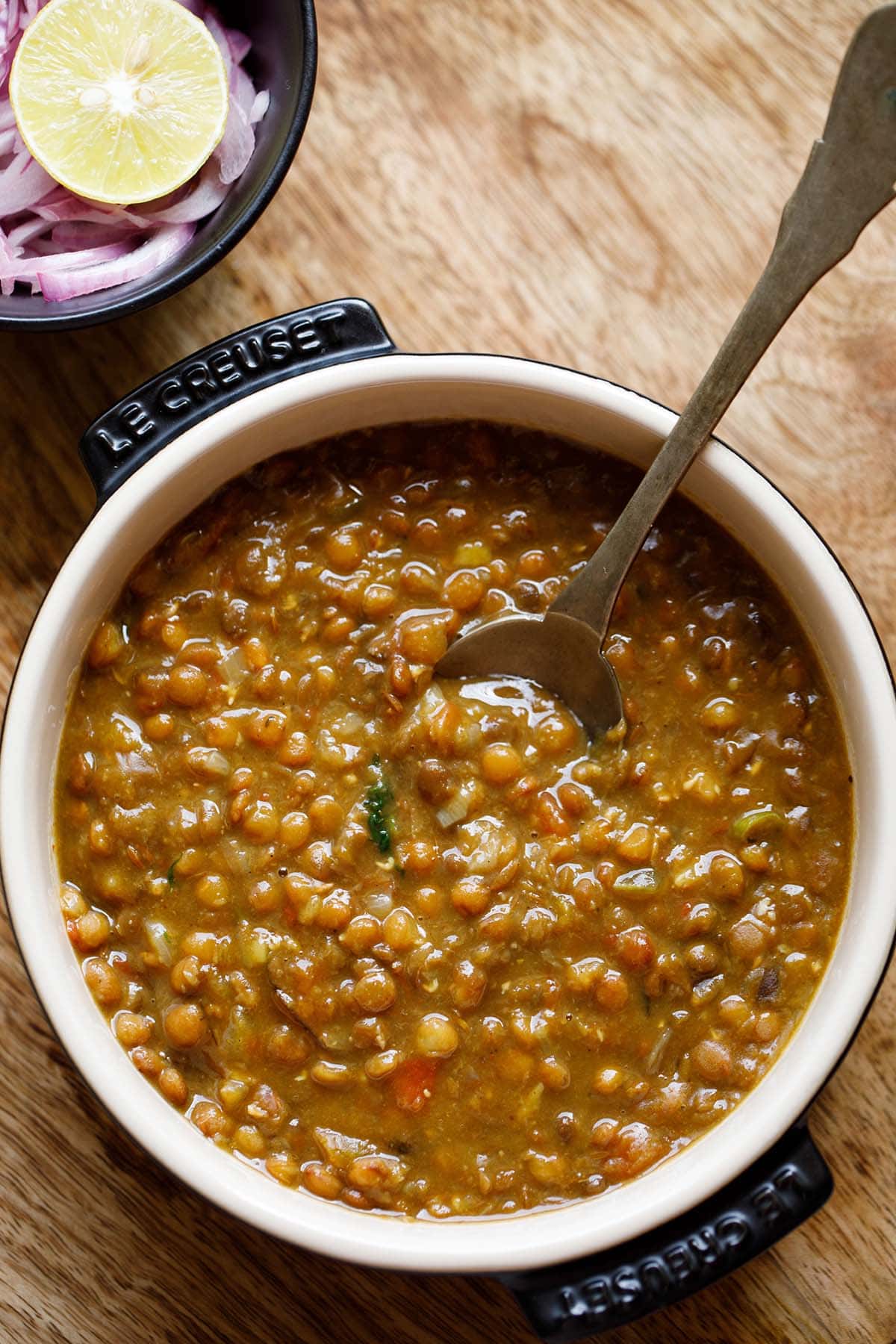
About Brown Lentils
Like I said in the beginning, this creamy, yet delicious Sabut Masoor Dal recipe is a spiced lentil-based dish made with whole brown lentils, onions, tomatoes, spices, herbs and cream.
Though, nothing compares to the comforting nature of a simple Arhar Dal, this Whole Masoor Dal is a great way to include a different variety of lentil in your everyday meals.
Also, at times when you want to experiment with something new in your dal-chawal combination, go for this Whole Masoor Dal Recipe.
Even this, when paired with steaming hot rice, makes for a simple, yet super delicious and hearty meal at home. Have an achar of your choice on the side, the meal instantly becomes heavenly!
This particular recipe of Sabut Masoor Dal is a North Indian style way of preparing a spiced, tasty and quick dal from whole lentils with brown husk. I make this recipe of Brown Lentils on occasions.
The dal is creamy, not thin or thick, but has a medium consistency. The consistency of this Whole Masoor Dal can also be kept thick, if not medium. Just don’t make it too thin, as then it will lose its charm.
To enhance the taste and to add to the richness of the dal, add some cream to it. However, this is optional. It is a versatile lentil dish and you can increase or reduce the spices, as per your taste requirements.
If you are serving this dal with chapati or roti, then you can keep a thick consistency in the dal. For serving with rice, keep the medium or slightly thin consistency in the dal.
You can relish the flavors of this Sabut Masoor Dal with steamed rice, jeera rice, peas pulao or flatbreads like roti, naan, paratha or even your loaf breads. You can also have it plain like a soup.
Step-by-Step Guide
How to make Whole Masoor Dal
Pressure Cook Lentils
1. Pick and rinse ½ cup brown lentils (120 grams) for a couple of times in water. If you have time, then you can soak the lentils for about 30 to 40 minutes after rinsing.
Then, in a 3 litre stovetop pressure cooker, take the brown lentils and add 2 to 2.25 cups water.
Note that you can choose to cook the lentils in an Instant Pot or in a pan on the stovetop. If cooking these lentils in a pan/pot, soak them for 1 to 2 hours before you boil them.
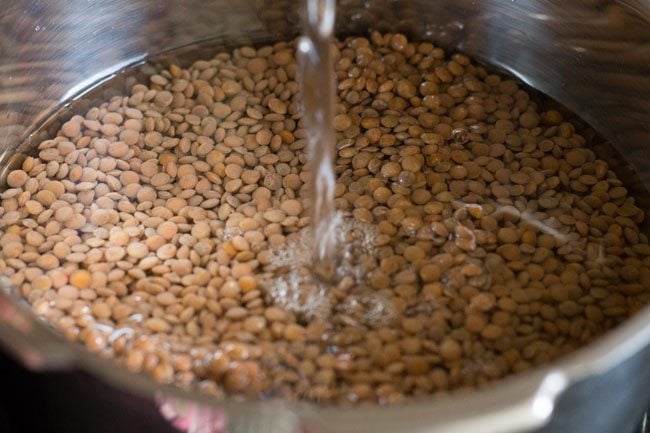
2. Pressure cook on medium heat for 10 to 12 minutes or till the lentils are softened and cooked thoroughly.
Let the pressure drop naturally in the cooker. Open the lid only once all the pressure is dropped.
If the lentils are undercooked, add some water if needed and pressure cook for some more minutes.
Note that the timing to cook the lentils will vary depending upon the quality and age of the lentils.
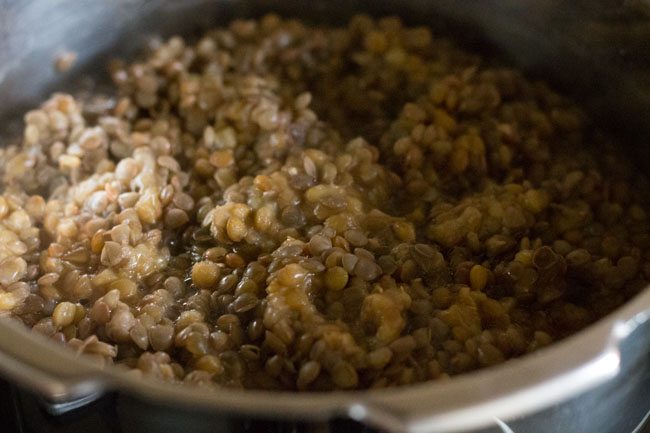
Make Onion Tomato Masala
3. In a pan, heat 2 tablespoons oil. Keeping the heat to a low, add ½ teaspoon cumin seeds and let them splutter.
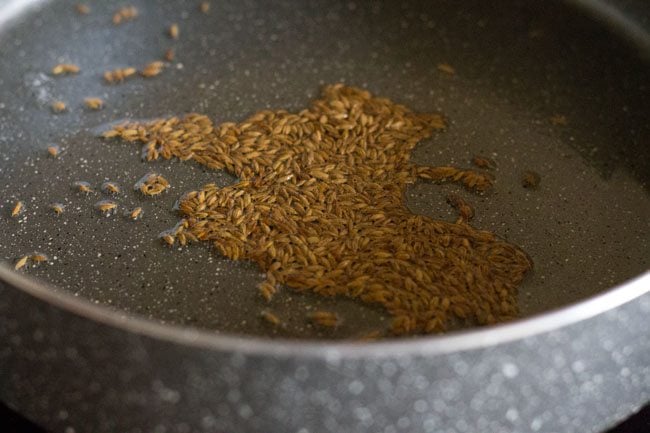
4. Then, add ⅓ cup chopped onions. On low to medium heat, sauté till the onions are golden or brown stirring often.
This is an important step in making this dal. You have to caramelize the onions as it is this caramelization that gives a lot of flavor and taste to this dal.
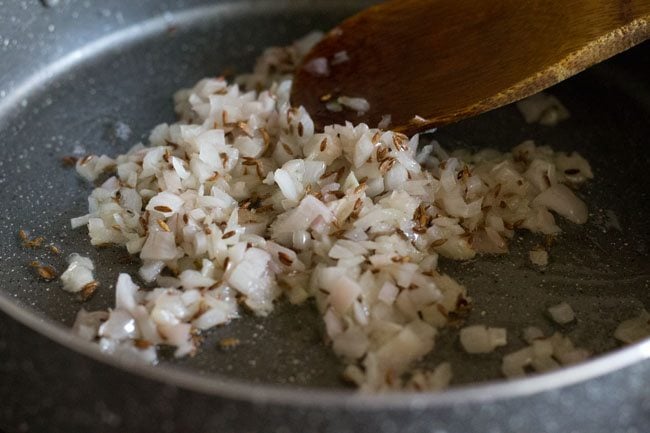
5. Sauté the onions till they become golden or are caramelized. But make sure you don’t burn them.
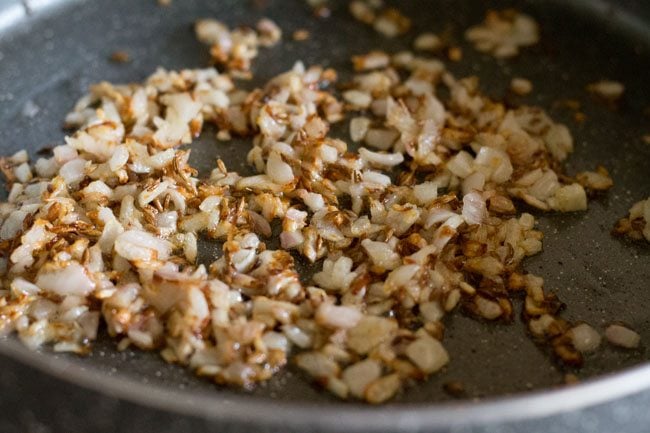
6. Once the onions are browned, add 1 teaspoon ginger-garlic paste.
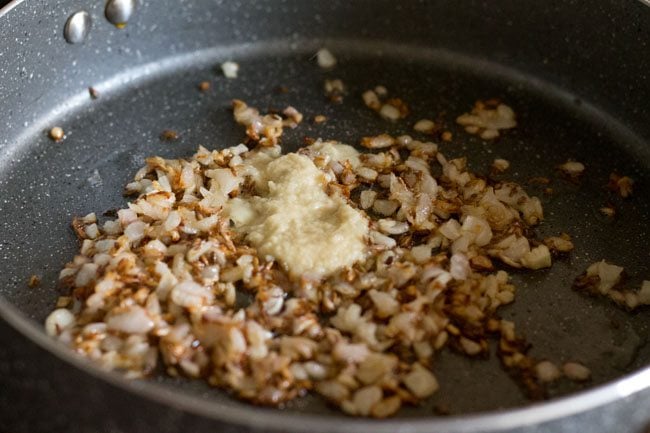
7. Stir and sauté for a few seconds or till the raw aroma of ginger-garlic goes away.
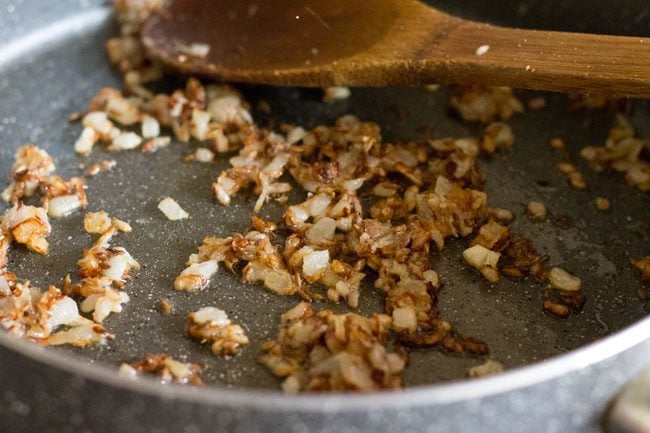
8. Then, add ¾ to 1 cup of chopped tomatoes and 1 teaspoon chopped green chilies.
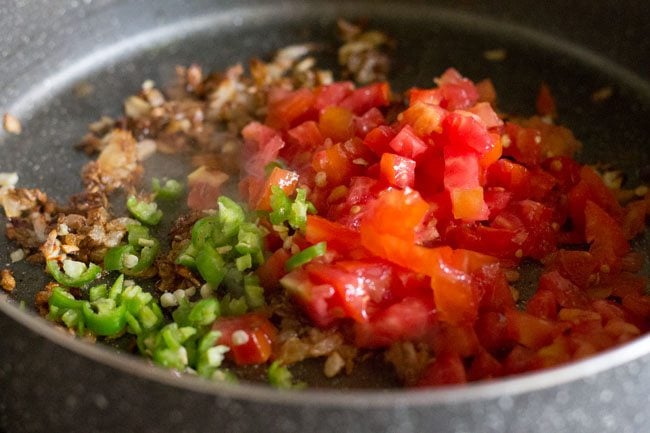
9. Stir and fry again for a few minutes or till the tomatoes turn soft and pulpy. You will also see oil releasing from the sides of the masala paste.
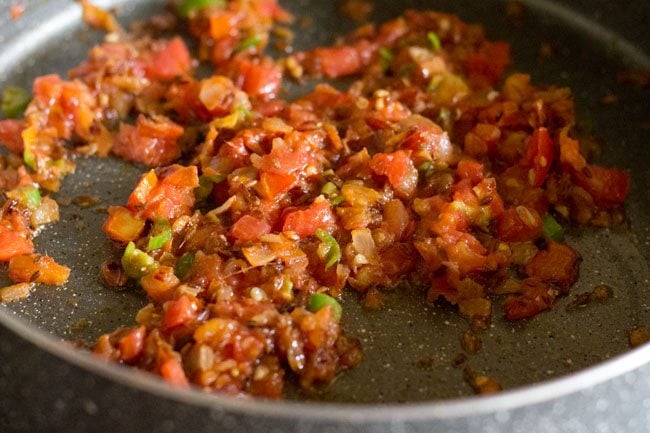
10. Then, add ½ teaspoon red chili powder and ½ teaspoon turmeric powder.
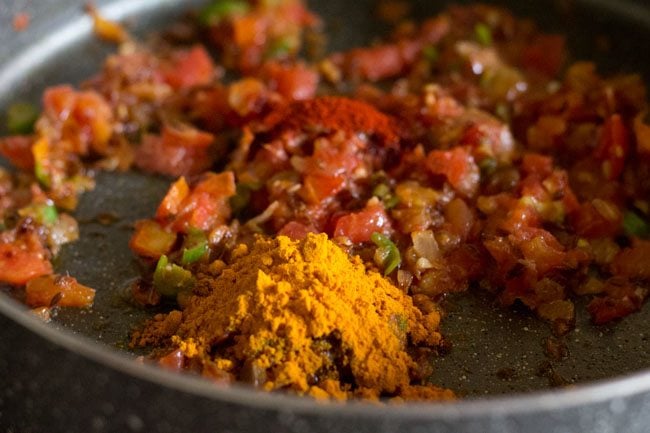
11. Mix the ground spices with the rest of the sautéed onion and tomato masala base.
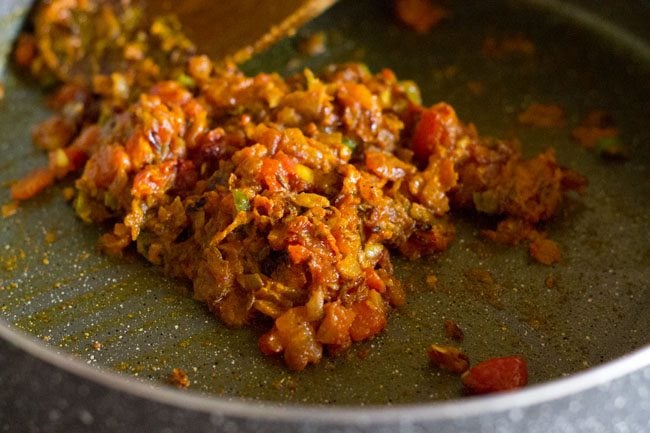
Cook Brown Lentils Further
12. Now, add the cooked brown lentils to this tomato masala paste.
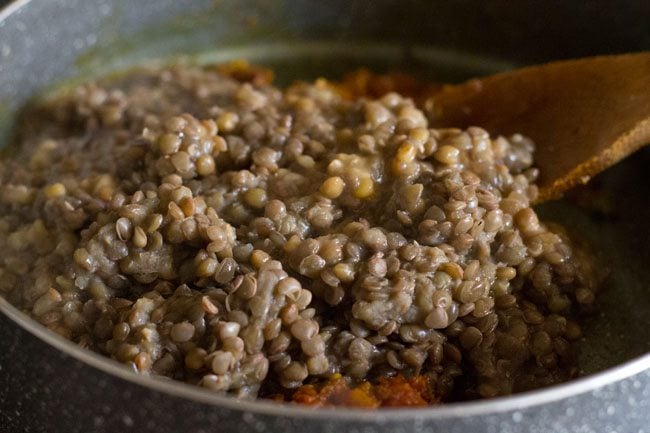
13 . Stir and mix thoroughly.
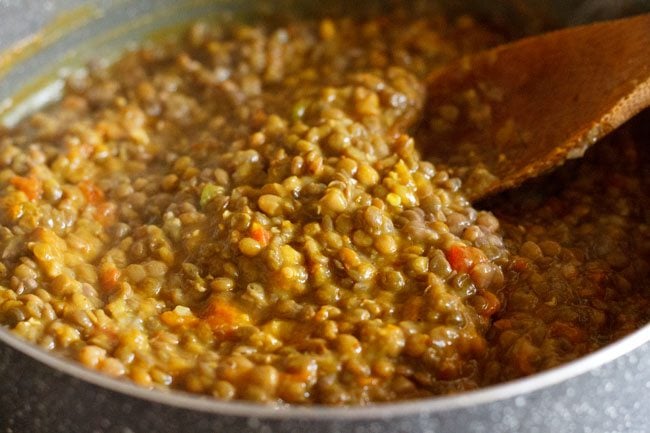
14. Add salt as required.
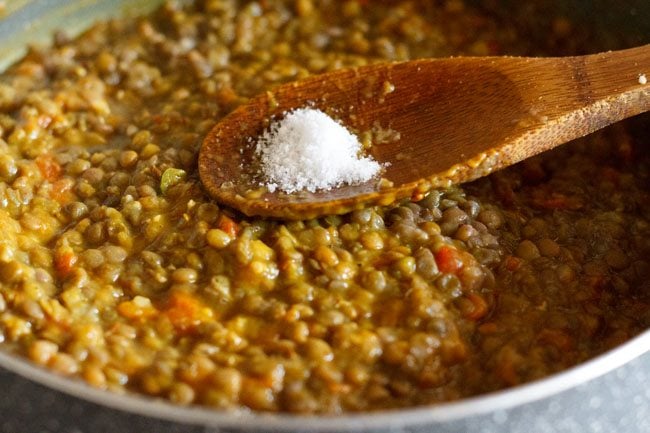
15. Add 1.5 to 2 cups water or as required to get a medium consistency. Mix again. Simmer the dal on low or medium heat.
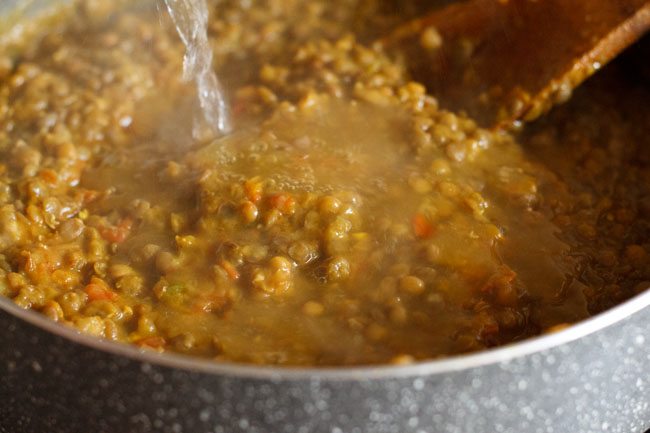
16. Mash some dal with a ladle or spoon at the sides of the pan. This is done to get a creamier consistency.
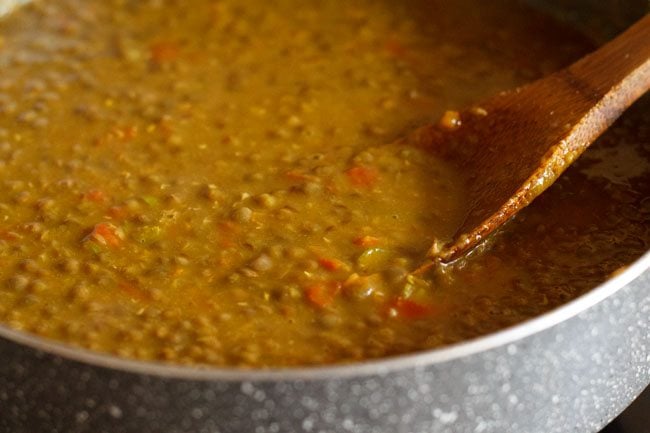
17. Next, add ½ teaspoon garam masala powder.
For a more creamier consistency and rich taste, add about 2 to 3 tablespoons of light cream. The addition of cream is optional and you can skip if you don’t have.
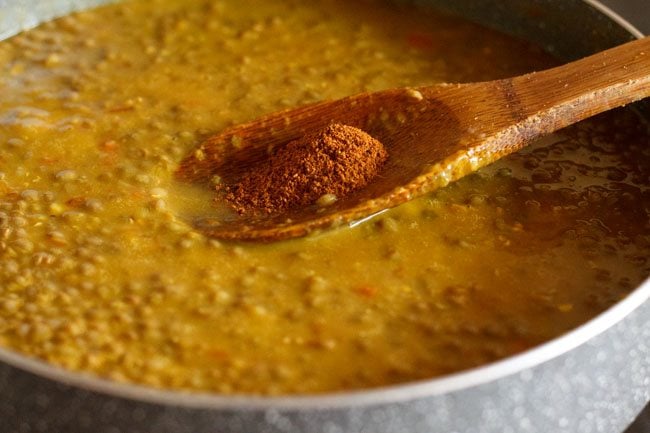
18. Next, add ½ teaspoon kasuri methi (dried fenugreek leaves). Crush the kasuri methi in your palms and add. Stir to combine and switch off the heat.
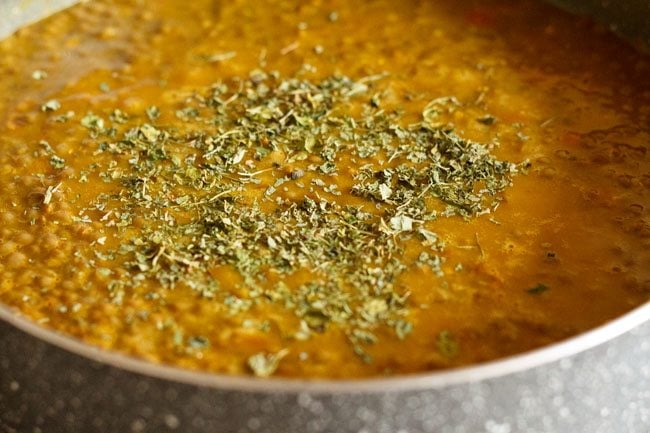
19. Before serving, garnish the Sabut Masoor Dal with some chopped coriander leaves.
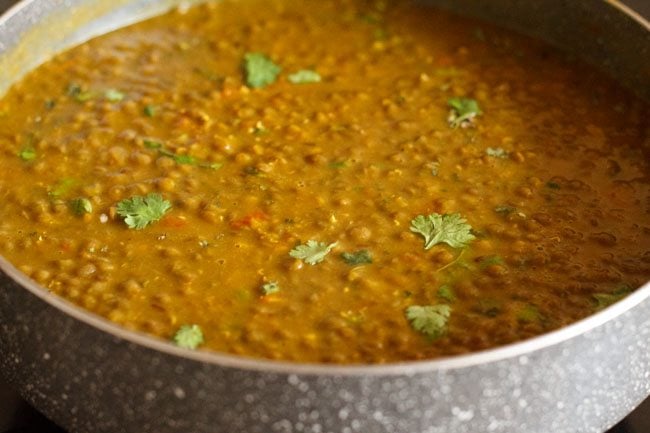
20. Serve creamy Whole Masoor Dal or Brown Lentils with steamed basmati rice, roti, plain paratha, lachcha paratha or rumali roti.
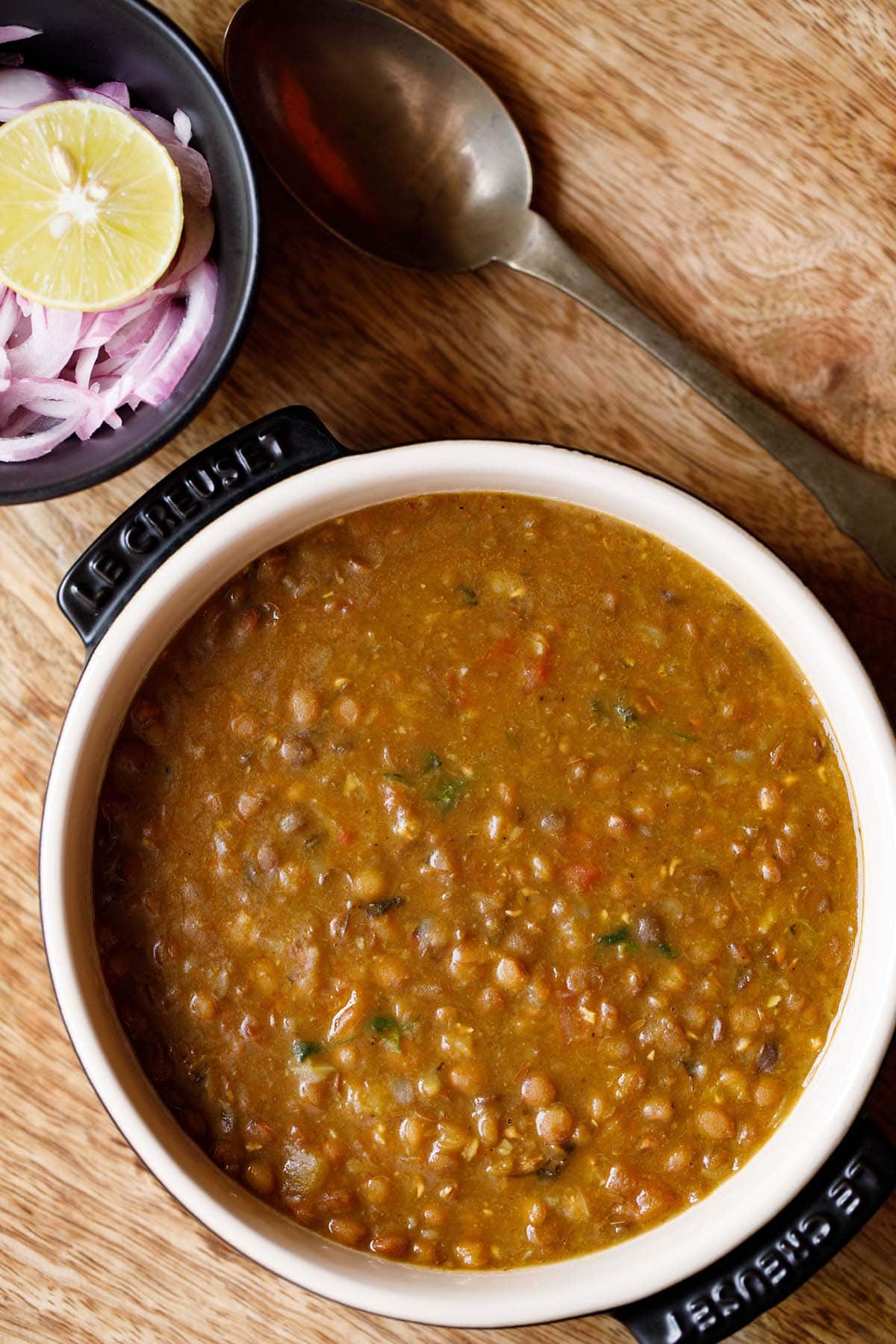
Expert Tips
- Soaking Lentils: If you have some time at hand while making this recipe, then you can soak the rinsed lentils in water for about 30 to 40 minutes. If not, then directly pressure cook. Soaking lentils will reduce the cooking time.
- Quality of Lentils: The time to cook the brown lentils will depend on the age and quality of the lentils. Older or aged lentils will take more time to cook and soften.
- Caramelizing onions: Make sure to properly brown the onions till golden, as this is what imparts a lot of flavor in this dal. But do ensure that they don’t get browned too much or get burnt as this can make the dal taste bitter.
- Consistency: The best way to cook this dal is to keep a medium consistency in it. Depending on what you are serving it, you can even keep it thick or slightly thin, but not extremely thin. Add water accordingly.
- Spiciness: This recipe gives you a spicy dal. So add less of the green chillies and red chilli powder according to your spice preferences.
- Creamy Consistency: To get a creamier consistency in the dal, you can mash some dal with a ladle or spoon, while cooking it with the spices. Adding cream in this recipe is optional. You can skip it, if you want a less rich version of the dal.
- Scaling: To make for more servings, easily scale up the recipe.
Brown Lentils vs Red Lentils
Both the orange or red lentils and the brown lentils are same. The difference is just that the red lentils are hulled and brown lentils have the husks on them.
When the lentil is whole, with the husk on it, it has a brown color. When the lentil is split or whole with the the husk removed, it is called red lentil or orange lentil as it has a reddish orange color.
In fact these lentils whether husked or with the husks, are generally called Masoor Dal in Hindi. But the whole lentils with brown husks on it have a specific name in Hindi, and are called Sabut Masoor Dal, where the word sabut means ‘whole’ or ‘complete’.
If you like red lentils, do check this tasty North Indian preparation made with them – Indian Red Lentils.
Like other lentil-based dishes, this dish is also a great source of proteins because these lentils are a plant-based storehouse of this specific nutrient.
In addition to this, masoor dal is low in fat content, has anti-inflammatory properties and rich in iron, fibre, antioxidants, vitamins and minerals.
In fact, it is known to be great for reducing chances of heart diseases by keeping a check on cholesterol and blood pressure levels.
More Popular Indian Lentil Recipes To Try!
Dal (Lentils) & Legumes
Dal (Lentils) & Legumes
Dal Tadka (Restaurant Style Recipe) – Stovetop & Instant Pot
Dal (Lentils) & Legumes
Dal (Lentils) & Legumes
Please be sure to rate the recipe in the recipe card or leave a comment below if you have made it. For more vegetarian inspirations, Sign Up for my emails or follow me on Instagram, Youtube, Facebook, Pinterest or Twitter.
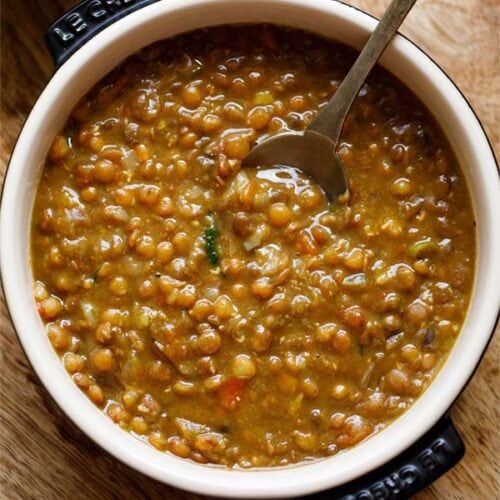
Whole Masoor Dal | Brown Lentils (Sabut Masoor Dal)
This recipe of Whole Masoor Dal or Brown Lentils is a spicy and tasty North Indian style lentil preparation made with whole brown lentils, onions, tomatoes, herbs and spices.
Prep Time 10 mins
Cook Time 20 mins
Total Time 30 mins
For cooking brown lentils
Prevent your screen from going dark while making the recipe
Pressure cooking brown lentils
Making onion tomato masala
Heat oil for tempering the dal in a pan. Keep the heat to a low
Add cumin seeds and let them crackle. Next add the chopped onions.
Sauté the onions stirring often until are golden or browned. This is an important step in making this dal.
You have to caramelize the onions as it gives a lot of flavor and taste to the dal.
Add ginger-garlic paste and sauté for a few seconds or till the raw aroma of ginger-garlic goes away.
- Add the chopped tomatoes and green chillies and sauté again until the tomatoes become soft and pulpy. You will also see oil releasing from the sides of the masala paste.
Once the tomatoes have softened and look mushy, add red chili powder and turmeric powder. Mix to combine to an even mixture.
Making whole masoor dal
Now add this mixture to the cooked dal or add the cooked dal to the tempering – whatever suits you. Mix well and add salt as required.
Add water as required to get a medium consistency in the dal.
Simmer the dal on a low or medium heat stirring as needed. If the dal looks too thick then add some more water or as needed to get the right consistency.
Mash some of the lentils with your ladle or spoon at the sides of the pan. This is done to get a creamier consistency.
- Add garam masala powder and crushed kasuri methi. Mix and turn off the heat. Optionally, you could also add light cream to get a richer flavor and more creamier consistency.
Garnish the Sabut Masoor Dal with chopped coriander leaves.
Serve the Brown Lentils with some steamed basmati rice or roti or paratha or naan.
Cooking Brown Lentils in a pan or pot:
- Rinse and soak the lentils for 1 to 2 hours in enough water.
- Drain the water and add the lentils to a pot or pan. Pour 3 to 3.5 cups water. Cover pan with lid. Simmer on medium heat until the lentils are softened. Do check a few times and if the water reduces, add some more water. Once the lentils are softened, follow the recipe as is.
- The amount of water needed depends upon the quality of the lentils. If the lentils are older they will take more time to cook and will also need more water.
- Cooking dal/lentils in a pressure cooker is easier and quicker.
Nutrition Facts
Whole Masoor Dal | Brown Lentils (Sabut Masoor Dal)
Amount Per Serving
Calories 247 Calories from Fat 117
% Daily Value*
Fat 13g20%
Saturated Fat 3g19%
Polyunsaturated Fat 1g
Monounsaturated Fat 9g
Cholesterol 11mg4%
Sodium 428mg19%
Potassium 460mg13%
Carbohydrates 24g8%
Fiber 11g46%
Sugar 3g3%
Protein 9g18%
Vitamin A 536IU11%
Vitamin B1 (Thiamine) 0.3mg20%
Vitamin B2 (Riboflavin) 0.1mg6%
Vitamin B3 (Niacin) 1mg5%
Vitamin B6 0.2mg10%
Vitamin B12 0.02µg0%
Vitamin C 9mg11%
Vitamin D 0.1µg1%
Vitamin E 4mg27%
Vitamin K 6µg6%
Calcium 47mg5%
Vitamin B9 (Folate) 163µg41%
Iron 3mg17%
Magnesium 51mg13%
Phosphorus 169mg17%
Zinc 2mg13%
* Percent Daily Values are based on a 2000 calorie diet.
Source link


